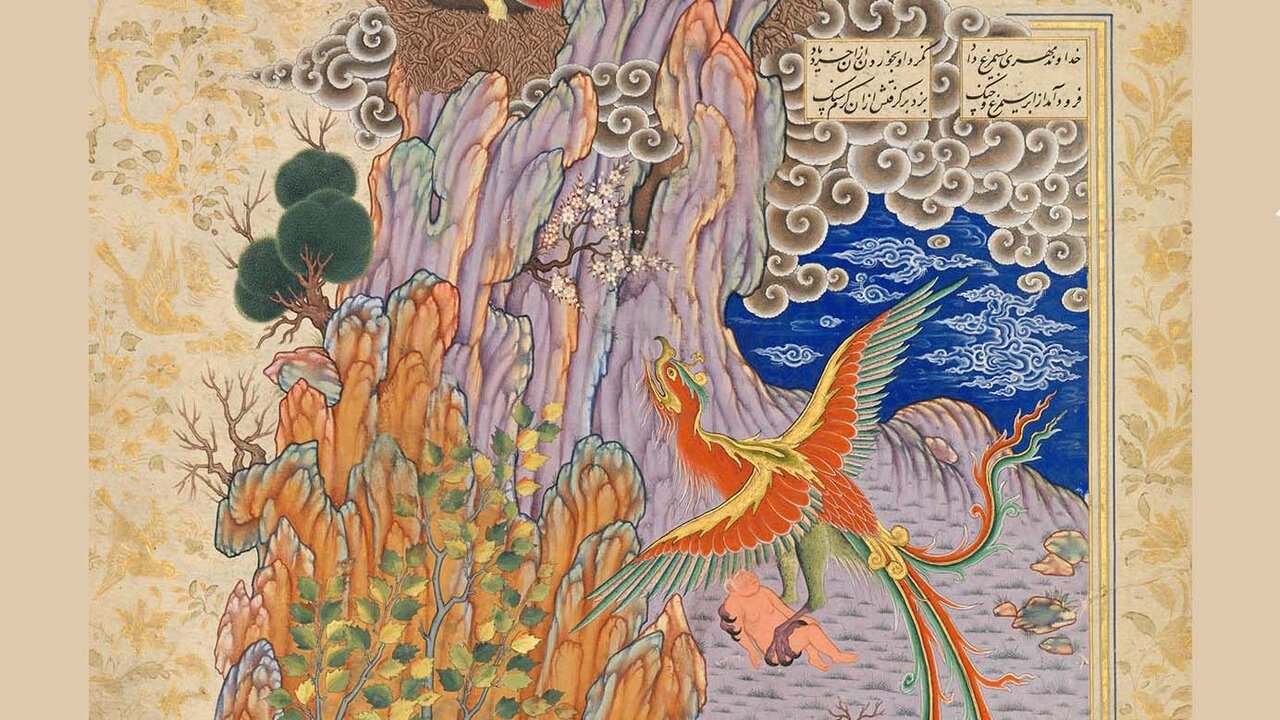Discover the heart of ancient Persia through its mythological creatures

TEHRAN – The realm of ancient Persian mythology is full of vibrant tales of mythological creatures that reflect glimpses of civilization’s core values, fears, and hopes.
Those tales, top examples of which can be traced in Ferdowsi’s Shahnameh (the epic Book of Kings), offer captivating glimpses into the timeless battle between good and evil, order and chaos.
These mythological creatures, from the benevolent Gavaevodata to the fearsome Azhi Dahaka, offer a profound understanding of the human condition through the lens of Persian culture.
Whether you’re a history enthusiast, a mythology lover, or a curious traveler, exploring the tales of these twelve ancient Persian creatures promises an unforgettable adventure into the heart of a civilization where legends still come alive.
Here is a brief introduction to twelve remarkable creatures that stand as guardians, villains, and enigmatic figures, each with a unique story to tell.
Gavaevodata: a primordial bull
Begin your exploration with Gavaevodata, the primordial bull, a symbol of the high-value Persians placed on animals.Created by the supreme deity Ahura Mazda, Gavaevodata was the first unique entity on earth, embodying the essence of life and fertility. This majestic bull signifies the dawn of creation and the interconnectedness of all living beings.
Simurgh: a wise giant bird
Next, ascend to the heights of the Alburz Mountains, home to Simurgh, the legendary giant bird. With the head of a dog, the body of a peacock, and the claws of a lion, Simurgh is a paragon of wisdom and rebirth.
This majestic creature, living for 1,700 years before rising from its ashes, inspires tales of renewal and eternal wisdom, much like the later Phoenix.
Huma bird: an eternal blessing
Soar across the skies with the Huma bird, a later incarnation of Simurgh. This mythical bird never lands, blessing anyone upon whom its shadow falls with lifelong happiness. The Huma bird’s story is one of hope and divine favor, promising joy and prosperity to those fortunate enough to encounter it.
Chamrosh and Kamak: guardians and destroyers
Encounter the duality of Chamrosh and Kamak, two colossal birds embodying the forces of good and evil. Chamrosh, with its eagle wings and dog’s body, protects the land, scattering seeds to ensure prosperity and defend against invaders. In stark contrast, Kamak, a harbinger of destruction, brings drought and prey on the people and their livestock, illustrating the perpetual struggle between benevolence and malevolence.
Al: a nocturnal predator
Delve into the darker side of Persian mythology with the Al, a terrifying nocturnal predator.
Depicted as an old woman with sharp teeth and talons, the Al preys on newborns and pregnant women, embodying the fears of vulnerability and loss. This creature’s sinister presence serves as a reminder of the ever-present dangers lurking in the shadows.
Manticore: an invincible man-eater
Face the fearsome Manticore, a creature with the head of a man, the body of a lion, and the tail of a scorpion. Known for its invincibility and swift movements, the Manticore strikes terror into the hearts of those it encounters.
Its legend speaks of the mysteries and perils that lie beyond the known world, challenging the bravest of souls.
Peri: playful spirits
Peris were enchanting winged creatures known for their playful yet sometimes helpful nature. These tiny spirits, believed to atone for past sins, are neither wholly good nor evil.
Their whimsical presence adds a touch of magic and mischief to Persian folklore, embodying the unpredictable twists of fate.
Suroosh and Daena: guardians of the afterlife
Journey to the Chinvat Bridge, where Suroosh, the angel of protection, and Daena, the Holy Maiden of conscience, assist the newly deceased in crossing from life to death.
These benevolent figures symbolize the support and guidance provided to souls navigating the afterlife, ensuring a just passage to their final destination.
Jinn: enigmatic entities
Venture into the realm of the Jinn, supernatural entities inhabiting lonely places outside towns. These neutral spirits, neither immortal nor human, possess the power to influence human thought and action.
The Jinn’s elusive nature and unpredictability reflect the complexities and mysteries of the world around us.
Azhi Dahaka: a three-headed dragon
Confront Azhi Dahaka, the formidable three-headed dragon created by Angra Mainyu to spread chaos and disorder. With a thousand senses, Azhi Dahaka embodies the ultimate evil, aware of every threat and perpetually seeking to disrupt the balance. This dragon’s tale highlights the eternal battle between light and darkness, order and chaos.
AM
